Section 1 Subsystems
Memory -
Memory performance is very important on a motherboard, especially when you have a CPU with multiple cores and threads. If you have slow memory your cores and threads can become starved for data to execute. To test memory performance we run both Sisoft’s SANDRA and AIDA64. These two combine to not only give us accurate numbers but to validate each other. For testing at stock speeds the memory is hard set to 1333MHz while overclocking testing is done at the highest stable speed for the voltage of 1.65v this is due to the different memory dividers for each CPU. As such, the memory speeds will vary greatly. This means that the overclocked numbers are a little misleading and while they can show a trend are really only included to show if a board has a problem with memory performance at high clockspeeds.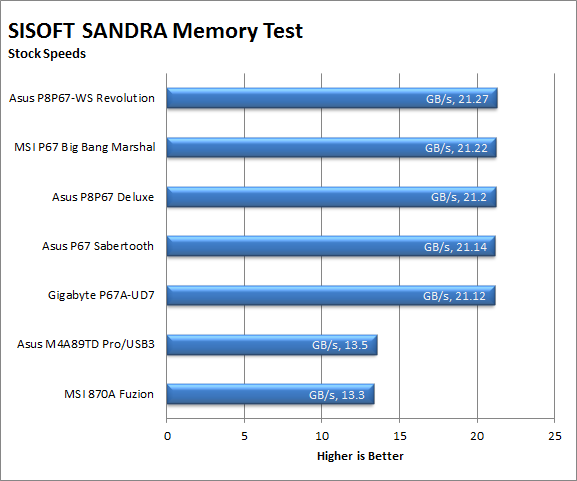
The Sabertooth P67 gets solid memory performance. At stock speeds it is right about where it should be. When overclocked the memory picks up a little, but not as much as some of the other boards we have tinkered with.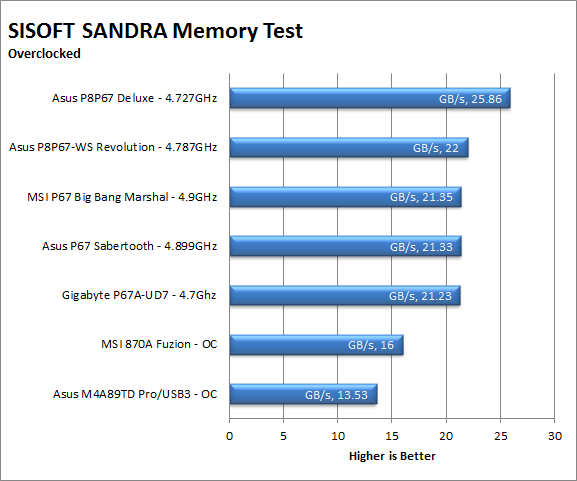
The AIDA64 scores (while not compared to anything else) give us the details that the general numbers from SANDRA cannot. We see that our memory latency is a little higher than we usually expect from a P67 board which could impact performance, especially when overclocked. The good news is that this can be fixed with a BIOS update, so nothing to worry about there.
| AIDA64 Memory Performance - Stock | AIDA64 Memory Performance - Overclocked |
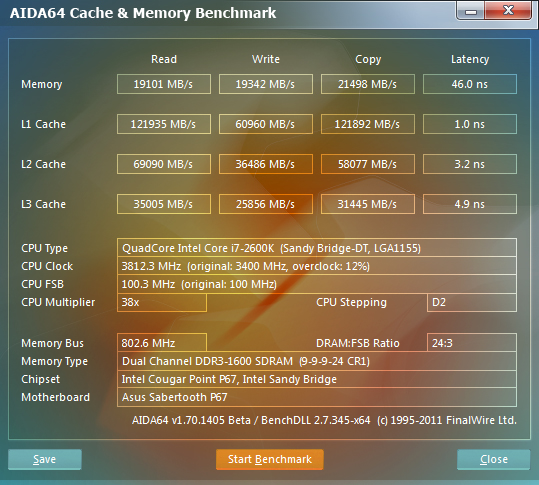 |
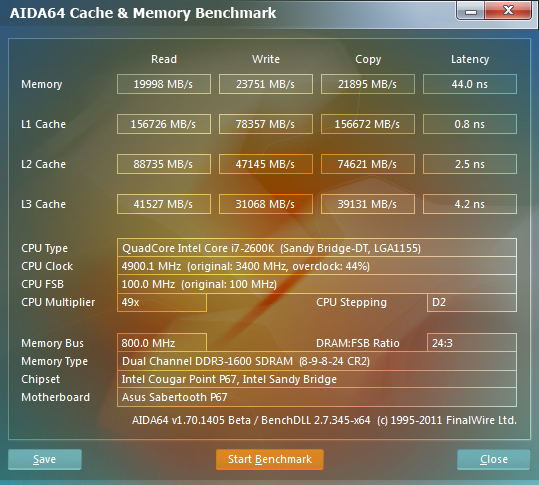 |
Drive performance -
Drive performance is also one of the major subsystems that goes to make up the performance of a motherboard. For our testing we use Sandra and AIDA64 again. We only test with single drives for each type of controller present on the motherboard (unless it is a professional product where we will use RIAD 5 and/or 10). We have also begun using a Seagate PS-110 USB 3 external HDD for our USB 3.0 performance. As a side note, we include the overclocked numbers here to make sure (again) that you are not going to see a major drop in performance due to minor instabilities at high clock speeds.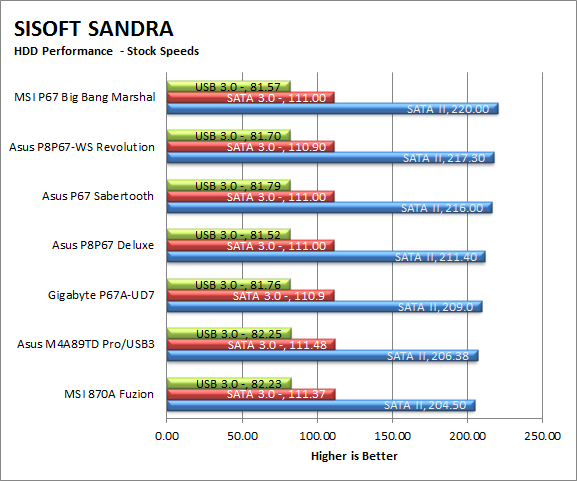
The Drive performance is also where it should be for a P67 based board; which is to say that you are not going to be slowed down by the Sabertooth, but you could be by your choice of drive. 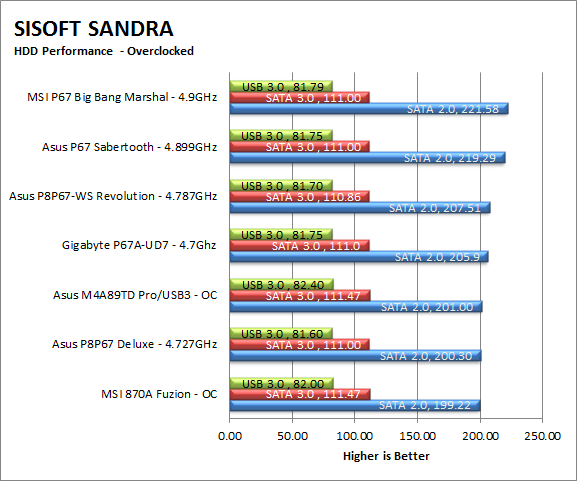
Once again AIDA64 fills in the details of the performance on the Sabertooth’s HDD controller.
| AIDA64 HDD Performance - Stock | AIDA64 HDD Performance - Overclocked |
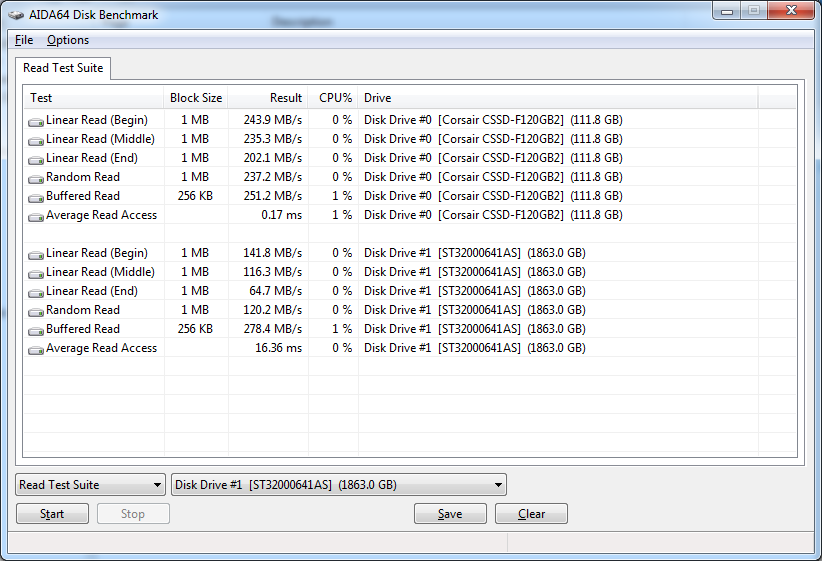 |
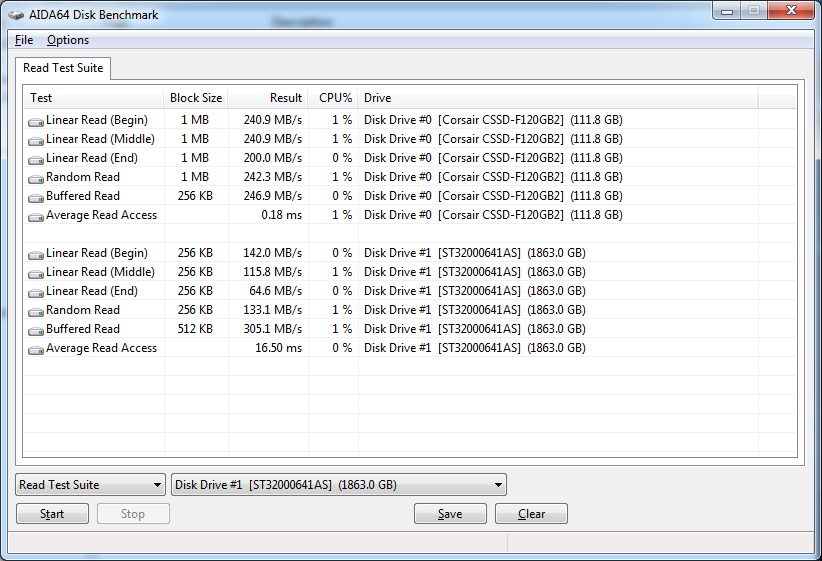 |
USB 3.0 speeds were about even with every other board out.
| AIDA64 USB3.0 Performance - Stock | AIDA64 USB 3.0 Performance - Overclocked |
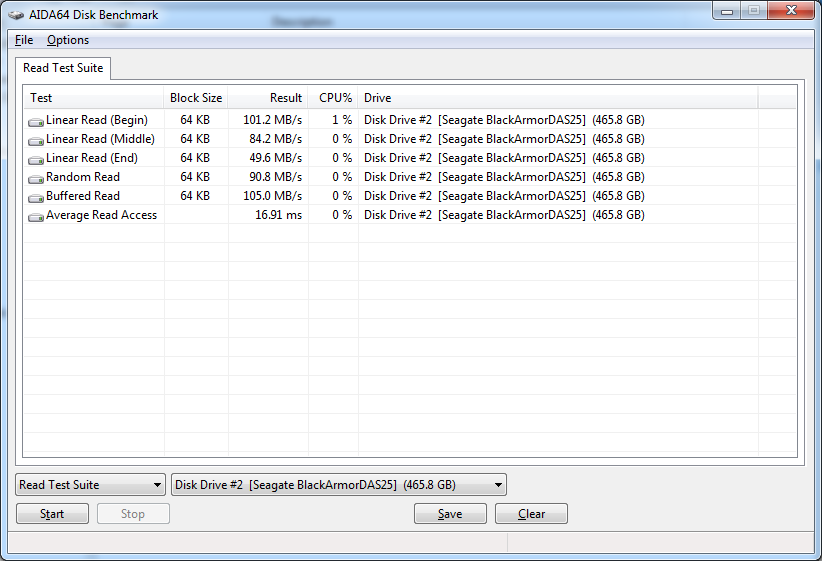 |
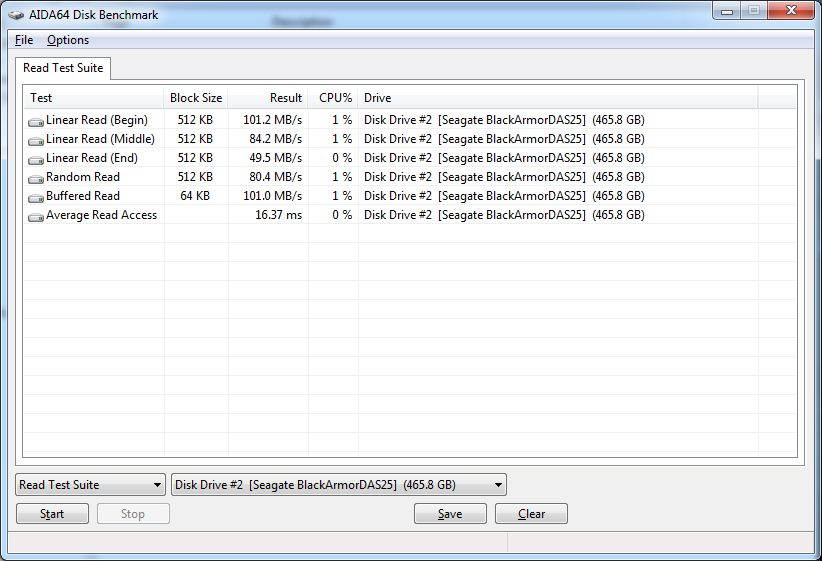 |
Power -
Power efficiency is another of those misnomers that we get caught up in. We hear about idle states and power gates. But what does that mean to you and I? On the surface having power management that reduces idle power sounds great and can be a benefit to someone that leaves their system on for long periods of time (and inactive) but how a system handles power under load and the delta between the two states is often more important than the idle power usage numbers. We use only P3 Kill A Watt instruments for measuring power. 
I was a little surprised to see that the Asus Sabertooth P67 drew as much power as it does from the wall. Usually Asus’s motherboards are very energy efficient but for some reason the Sabertooth just pulls more power. We were trying to identify what that is and can only conclude that the B3 stepping of the Cougar Point MCP is possibly drawing more power. We will work to confirm that, but for right now it would appear to be the case.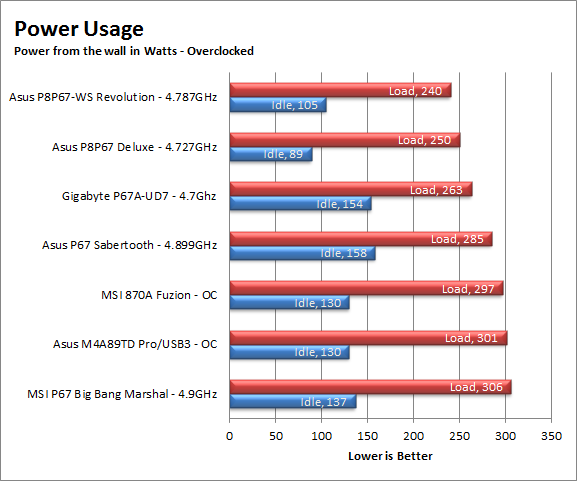
Cooling (Board Level) -
Board level cooling is an important factor in product performance and longevity. Components like the chipset, VRM modules and even capacitors need to be kept relatively cool to prevent failure. As these parts are made of silicon, they have a thermal breakdown threshold; or melting point. At that temperature the actual transistors built into chip will begin to deform and break down. Granted, the threshold is often very high, but you still need to make sure that components stay away from this level of heat for longer product life. 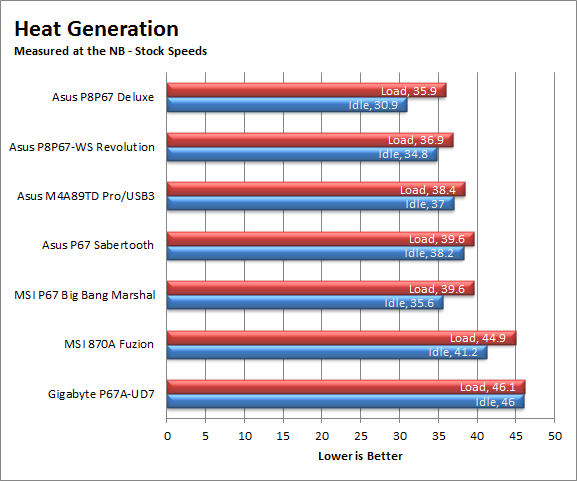
The Thermal Armor on the Sabertooth looks very nice; it is also very good at keeping the board cool. We ran the Sabertooth with a water cooling setup and did not put any extra fans to make sure that we had air flow under the armor. Even without this the Sabertooth still fell right in the middle of the pack in terms of heat generation and buildup. If you are using air cooling or are going to use the fan mounts available then your cooling should be even better than what we saw.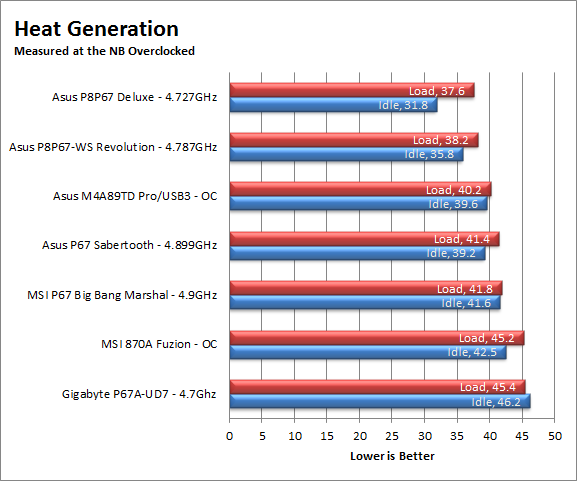
Audio -
Audio is highly subjective. What we find pleasing may sound “off” to you. That is always going to the problem with testing audio; results will vary too widely depending on the tastes of the listener. However, there are ways of measuring the audio output with an objective ear. There is also the issue of audio causing performance issues in gaming and video playback. The reason this is a potential source of concern is that all onboard audio CODECs (Compression/Decompression) are CPU controlled. This means that while the audio chip controls the audio levels and effects of the audio the actual work is done on the CPU. Usually this will not be a problem with today’s powerful CPUs. Even the lower and consumer level products can handle high-end audio these days. But again there is the chance that a bad design or software will hinder your system and performance. On the other side the limits of board space, cost, etc will also prevent the level of audio quality you can get from an add-in board. We test all audio parts with three media types, Movie (DVD), MP3 Music, and Gaming. These are pushed to our Tec On model 55 Tube Amp to see if we can detect any signal issues in the reproduction.
The audio CODEC on the Sabertooth P67 is on par with other boards in its price range and market. Although it is going to be more than good enough for most mainstream usage and some lower end gaming it is not going to cut it for higher end audio. This is true of about 99% of the CODECs used today though. If you are looking for high-end Bluray quality audio you will want to buy an add-in product. For just about everything else the built in audio will be just fine.
Networking -
This one is something that is a requirement anymore. If you have a computer, the chances are good (like 99%) that you are also connected to high-speed internet. With this you need a good and solid LAN chip to make sure that your data flows properly out and back.
As we have mentioned before Asus has moved to using Intel LAN controllers on almost all of their motherboards. This means that right out of the box you are going to get slightly better performance than other manufacturers that are using Realtek or another low cost provider. We found the LAN on the Sabertooth to be very solid and did not have any connectivity, performance or bandwidth issues.




